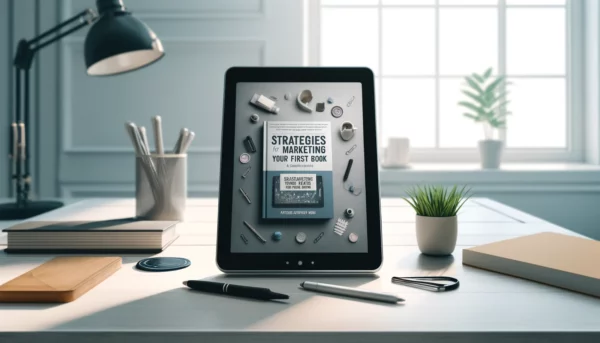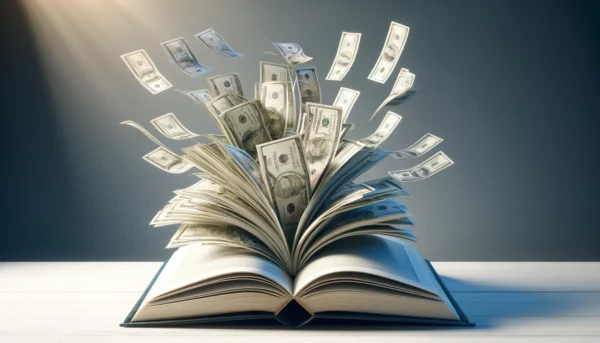Remember the days of Tamagotchis beeping for attention, Nickelodeon slime dominating the airwaves, and the symphony of dial-up internet connecting us to the world? For Millennials, these memories aren’t just relics of a bygone era—they’re a warm hug from the past, a connection to simpler times. And guess what? Publishers are cashing in on that nostalgic glow.
Enter nostalgia marketing—a strategy that leans heavily on sentimental value to influence modern consumer behavior. By rekindling the past with fond memories, marketers can tap into a valuable resource: the emotional connection people have with their formative years. This strategy is supported by studies published in international peer-reviewed journals, highlighting its academic credibility and effectiveness.
In the world of books, this means crafting stories, covers, and campaigns that feel like a time machine for Millennial readers. Nostalgia isn’t just a trip down memory lane; it’s a powerful marketing lever that inspires consumer choices, driving sales and cementing the past as a key player in the future of publishing.
Your Publishing Journey Awaits – Start NowUnderstanding Nostalgia Marketing
Nostalgia marketing is a powerful tool that taps into the emotional connection between consumers and their cherished past experiences. By rekindling fond memories, marketers can create a sense of nostalgia that can potentially affect consumer behavior, leading to increased brand loyalty and sales. This strategy leverages the emotional pull of the past to influence modern consumer choices, making it a valuable resource for scholars and practitioners seeking to understand the complexities of consumer behavior and develop effective marketing strategies. Whether it’s through retro-themed book covers or stories that echo the simplicity of pre-digital life, nostalgia marketing connects deeply with audiences, making them more likely to engage with and remain loyal to a brand.
The Past Sells: Why 90s Kids Are the New Goldmine
If you grew up rewinding VHS tapes or collecting Pokémon cards, you’re the golden target for publishers riding the nostalgia wave. Nostalgia book marketing is the art of leveraging sentimental longing for the past to create an emotional connection with readers. It’s a form of emotional branding that tugs on heartstrings, turning memories into a marketing jackpot.
Take, for example, campaigns like the resurgence of The Baby-Sitters Club—modern reprints that still feel delightfully retro—or memoirs from 90s icons like Jeanette McCurdy’s I’m Glad My Mom Died, which tapped into the shared experiences of a generation raised on Nickelodeon and Disney Channel. Even cover designs featuring vintage fonts and neon color palettes evoke instant familiarity.
Nostalgia marketing is also effectively used in sports marketing to engage fans and promote sports-related products.
Interactive marketing adds another layer, such as QR codes in books that lead to curated 90s playlists or retro-themed AR experiences. By blending nostalgia with modern technology, publishers make the past feel fresh and irresistible—just like a rewound cassette tape waiting to be played.
Back to the Future of Consumer Behavior
Nostalgia is more than just a warm, fuzzy feeling—it’s a powerful psychological driver that shapes consumer decisions. When people reminisce about the “good old days,” their brains release dopamine, creating a sense of comfort and trust. In marketing, this emotional response is gold, allowing brands to rekindle the past to influence consumer will in ways that feel personal and authentic.
Nostalgia is also leveraged in sports marketing to create emotional connections with fans and drive engagement.
In book publishing, this means designing covers that echo specific eras—think neon splashes reminiscent of the 80s or grungy fonts channeling 90s alternative culture. Themes, too, play a role: stories about school friendships, first crushes, or life before smartphones strike chords with Millennial readers. By tapping into these emotions, publishers not only engage their audience but also can influence consumer choices and behavior at the purchase stage.
Promotional strategies, such as targeted advertising communications, highlight how nostalgia can bridge the past and present. For scholars and marketers alike, nostalgia marketing is a valuable resource for understanding how “marketing rekindling the past” shapes buying choices, making it a cornerstone of consumer research and advertising communications.
Crafting Nostalgic Content
Crafting nostalgic content requires a keen understanding of your target audience and their unique past experiences. Marketers can employ various techniques to evoke nostalgia, such as using retro imagery, era-specific music, and vintage language that resonates with consumers. For instance, a book cover featuring neon colors and 90s fonts can instantly transport readers back to their childhood. Effective nostalgic content can be utilized across multiple marketing channels, including advertising communications, social media, and content marketing.
By incorporating these nostalgic elements, marketers create a sense of familiarity and comfort, which can lead to increased engagement and brand loyalty. The key is to blend these elements seamlessly into your campaigns, making the past feel both relevant and inviting.
Reaching Millennial Readers
Reaching Millennial readers with nostalgia marketing requires a nuanced approach that acknowledges their digital upbringing and unique preferences. Millennials, having grown up in the age of the introduction of the internet and social media, respond well to digital content that feels authentic and engaging. Marketers can leverage platforms like Instagram and TikTok to create nostalgic content that resonates with this demographic. For example, sharing throwback posts or using popular 90s hashtags can spark a sense of nostalgia.
Additionally, influencer marketing and user-generated content are powerful tools for tapping into the Millennial market. By collaborating with influencers who share a genuine connection to nostalgic themes, marketers can create a sense of nostalgia that drives brand loyalty and engagement.
Your Publishing Journey Awaits – Start NowSaving the Planet One Retro Read at a Time: Sustainable Consumption
Nostalgia doesn’t just bring back memories—it can also bring forward sustainable habits. In publishing, nostalgia-inspired strategies like reprinting classic books or using eco-friendly materials tap into readers’ love for the past while promoting greener choices. Whether it’s a childhood favorite re-released with recycled paper or digital collections that preserve iconic works, the result is sustainable consumption with a sentimental twist.
This approach ties neatly into broader trends like charitable giving sustainable consumption and sustainable business management. For instance, publishers can combine nostalgia with purpose, offering limited-edition reprints where proceeds support literacy programs or environmental causes.
Even beyond books, nostalgia drives sustainable consumption and sports tourism—like recreating historic tournaments or using sports tourism and retro themes to attract eco-conscious travelers. By showing that “old” can still be valuable, nostalgia becomes a tool not just for rekindling the past but also for securing a more sustainable future.
How Nostalgia Marketing Impacts Consumer Behavior in Practice
Nostalgia doesn’t just sell—it sticks. When readers encounter something that reminds them of their past, it triggers emotional engagement, which significantly impacts buying decisions. In practice, this means publishers can revive old series like Goosebumps or introduce throwback collections of beloved classics to drive sales. These strategies resonate because they evoke personal memories, creating a powerful sense of connection.
This emotional pull translates into advertising effectiveness. Nostalgia-driven campaigns often pair perfectly with interactive marketing tools, like social media polls asking readers about their favorite childhood books or QR codes that unlock retro-themed content. By aligning these services and marketing strategies with audience preferences, publishers can deepen engagement and improve campaign outcomes.
Behind the scenes, business research and consumer research provide a valuable resource for marketers and practitioners seeking to understand how nostalgia shapes behavior. By analyzing trends, such as which eras or themes resonate most, publishers can discover advancements in reader preferences and refine their strategies. Nostalgia, it turns out, isn’t just about looking back—it’s a way to stay ahead in the competitive publishing market.
Rewind, Reinvent, Resell
For authors, publishers, and marketers, nostalgia marketing offers endless opportunities to connect with readers—but it requires finesse. Start business research with a thorough examination of nostalgia: what moments, eras, or cultural touchpoints resonate most with your target audience? This insight, combined with advertising research, helps craft campaigns that balance authenticity with creativity.
Book covers, reprints, marketing letters, and storytelling themes should evoke specific memories while feeling fresh. Use business management strategies to ensure campaigns are both cost-effective and emotionally impactful. Meanwhile, interactive tools like AR throwbacks or retro-inspired playlists can amplify engagement.
Marketers can also focus on discovering advancements in consumer research to track how nostalgia-driven campaigns perform and evolve. By using advertising research and understanding reader behavior, you’ll uncover ways to not only rekindle the past but also sustain consumer loyalty for the future. Nostalgia isn’t just a tool—it’s a timeless strategy for staying relevant.
Turning Pages and Turning Back Time
Nostalgia marketing is more than a trend—it’s a bridge between the past and the present, offering a valuable resource for practitioners seeking and connecting with Millennial readers. By creatively embracing nostalgia, authors and marketers can craft campaigns that spark joy, foster emotional bonds, and drive lasting engagement.
Whether you’re designing retro book covers, reviving beloved classics, or curating playlists that transport readers back to their childhoods, the key is blending old-school charm with modern innovation. Nostalgia doesn’t just turn pages; it turns memories into magic. So, dust off those 90s references, power up your imagination, and let the past guide you to a future filled with endless possibilities.
Ready to create campaigns that connect on a deeper level? Let Spines help you craft compelling, nostalgia-driven marketing strategies that resonate with your audience, make your books unforgettable, and avoid asking yourself in a classic Steve Urkle voice, “Did I do that?”
Your Publishing Journey Awaits – Start Now






